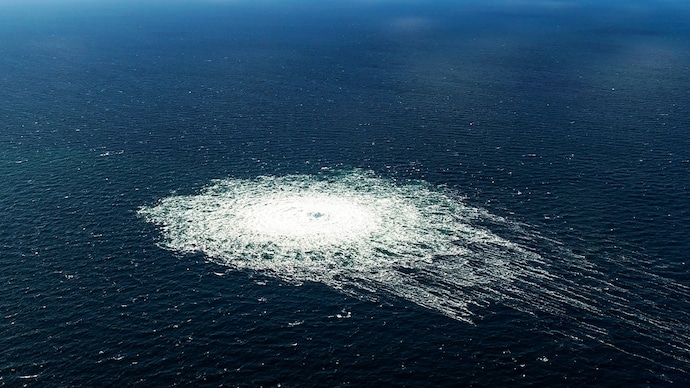In late September 2022, the Nord Stream 1 and 2 pipelines in the Baltic Sea experienced explosions, causing a massive release of methane gas. A recent study by researchers from the University of Gothenburg has provided new insights into the fate of this methane.
Key Findings
- Methane Dissolution: The study revealed that a significant portion of the released methane, estimated between 10,000 to 50,000 tonnes, dissolved into the surrounding seawater instead of escaping into the atmosphere.
- Measurement Expedition: Researchers were able to conduct an expedition to the leak site within a week of the incident, allowing them to measure the methane concentrations accurately.
Methane Dispersion and Stratification
- Isotopic Analysis: By analyzing the isotopic signature of the methane, the researchers could distinguish between pipeline methane and naturally occurring methane from seafloor sediments.
- Water Stratification: The study found that the leaked methane dispersed at varying concentrations within the stratified layers of the Baltic Sea, without causing major mixing of the water masses.
Environmental Impact
- Bacterial Activity: A follow-up expedition three months after the leak indicated high levels of bacterial activity, suggesting that microbes were actively breaking down the dissolved methane.
- Unclear Long-Term Effects: The long-term impacts on marine life, particularly phytoplankton and zooplankton populations, remain unknown. Plankton samples collected during the expeditions are still being analyzed.
Methane in the Ocean
- Greenhouse Effect: Methane dissolved in ocean waters can persist for decades, gradually diffusing into the atmosphere and contributing to greenhouse effects.
- Ocean Monitoring: The study underscores the importance of long-term monitoring and modeling of dissolved methane reservoirs to understand their climatic impact.
Conclusion
The University of Gothenburg’s study highlights the complexity of methane behavior in marine environments and the need for continuous observation to assess the long-term environmental and climatic consequences.
Multiple Choice Questions (MCQs):
- What was the estimated range of methane that dissolved into the Baltic Sea from the Nord Stream pipelines?
- A) 1,000 to 5,000 tonnes
- B) 10,000 to 50,000 tonnes
- C) 100,000 to 500,000 tonnes
- D) 1,000,000 to 5,000,000 tonnes
- How soon after the Nord Stream pipeline leak did the researchers conduct their expedition?
- A) Within 24 hours
- B) Within 3 days
- C) Within a week
- D) Within a month
- What method did the researchers use to distinguish the pipeline methane from naturally seeping methane?
- A) Chemical analysis
- B) Temperature measurement
- C) Isotopic signature analysis
- D) Pressure measurement
- What did the follow-up expedition three months after the leak reveal?
- A) Decreased methane levels
- B) Increased plankton populations
- C) High levels of bacterial activity
- D) Major water mixing
- What is the long-term impact of dissolved methane on the atmosphere?
- A) It has no impact
- B) It immediately dissipates
- C) It contributes to greenhouse effects over decades
- D) It turns into harmless gases
- Why is long-term monitoring of dissolved methane in oceans important?
- A) To ensure safe swimming conditions
- B) To predict future pipeline leaks
- C) To understand their climate impacts
- D) To increase fish populations
